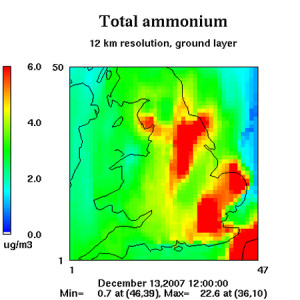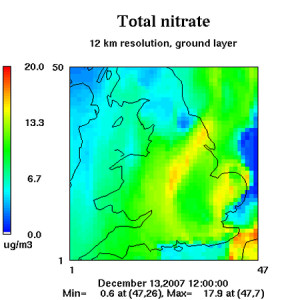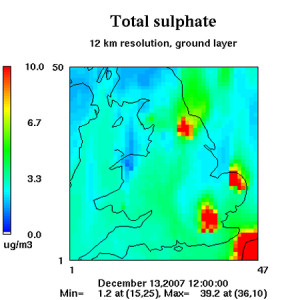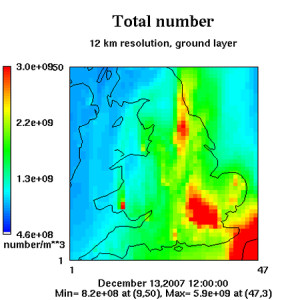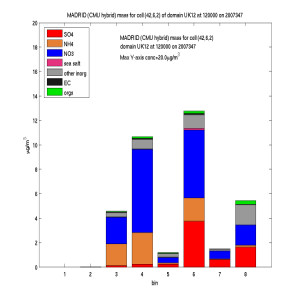Regional aerosol transport modelling
Over the past 3 years, we have been developing and modifying the US EPA CMAS Models-3 Community Multi-scale Air Quality (CMAQ) and CMAQ-MADRID (Model of Aerosol Dynamics, Reaction, Ionisation and Deposition) for use for aerosol modelling in the UK. The intention is to evaluate the various model versions as testbeds for aerosol process description, for comparison with field measurements and for use as an operational predictive “aerosol weather” system. Both model versions are 3D Eulerian models written in the US and require significant modification for use in N.W. Europe and the U.K. As part of the NERC APPRAISE-funded ADIENT project, we will be conducting simulations to quantify the atmospheric aerosol burden in plumes across the UK with particular emphasis on quantifying the direct radiative impact of pollutant plumes. Standard CMAQ uses a modal representation (a superposition of lognormal distributions) of the aerosol mass-size distribution, whereas CMAQ-MADRID uses a sectional (bin) representation. Both CMAQ model versions are written in a modular manner allowing us to "plug and play" different scientific models of various aerosol processes. We are particularly interested in incorporating schemes developed by other modellers in CAS, to demonstrate the regional effect of modified physics and chemistry. The ADIENT work will investigate how these processes affect regional climate effects. The regional modelling work is carried out by Michael Bane.
Note: At the fifth annual CMAS conference, October 2006, Michael was awarded, as acknowledgement of "significant contributions", the Community Modeling and Analysis (CMAS) Award "to recognize his outstanding achievements in advancing and promoting the ideals of the community modelling paradigm".
The above plots are from the 12 km resolution runs of our nested implementation of Models-3 CMAQ-MADRID showing the spatial distribution and mass-size distribution of the aerosol at noon on 13 Dec 2007. We are now comparing this and other model simulations to measurements taken during the NERC APPRAISE ADIENT project. Please click on any of the plots to view a larger version.
